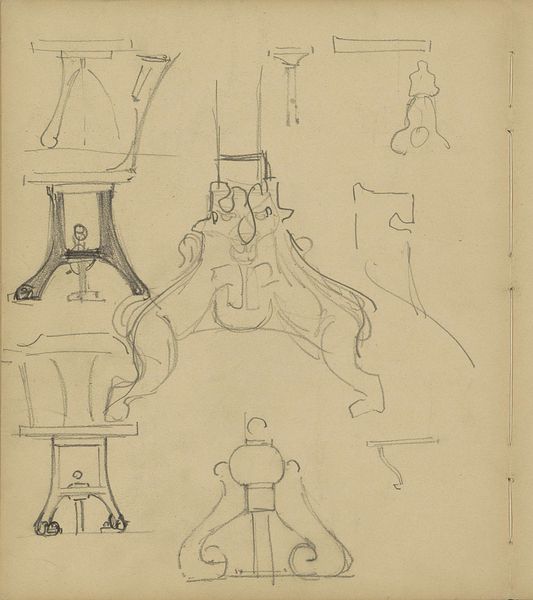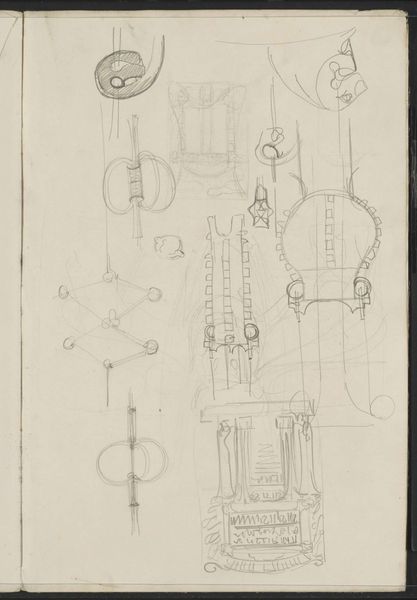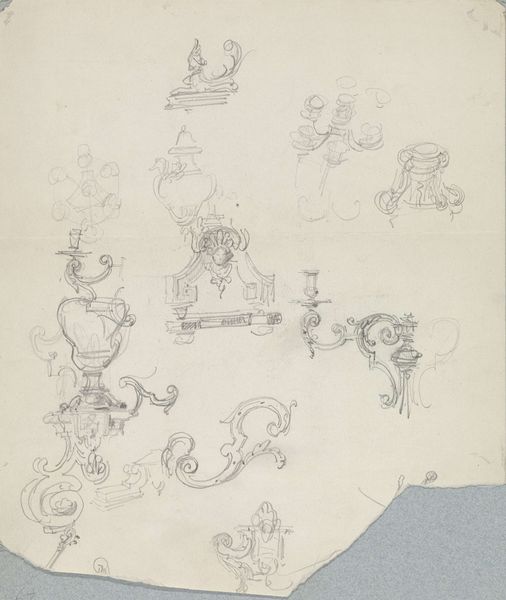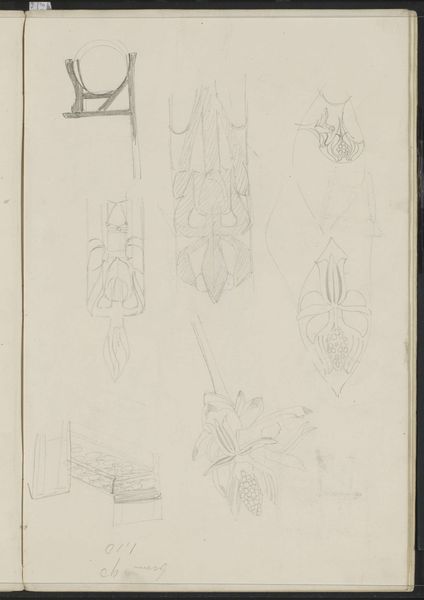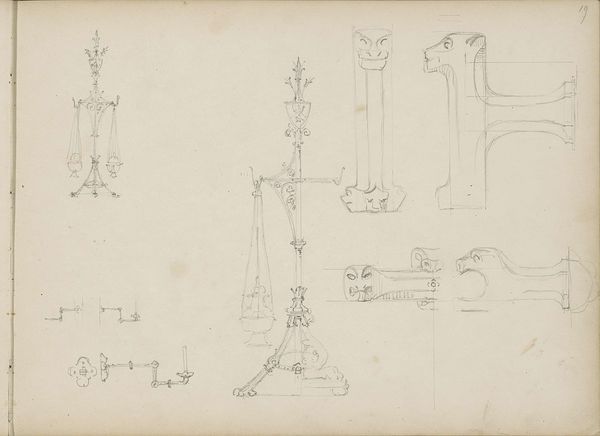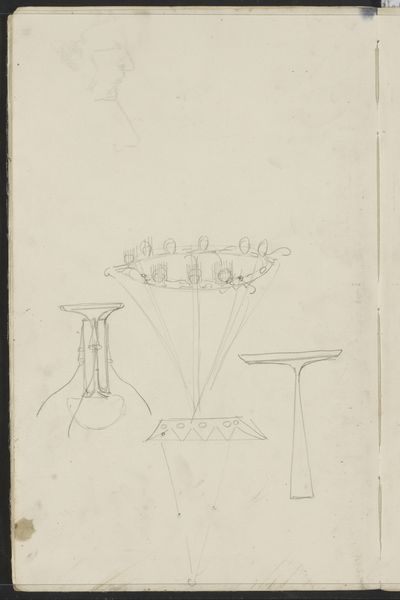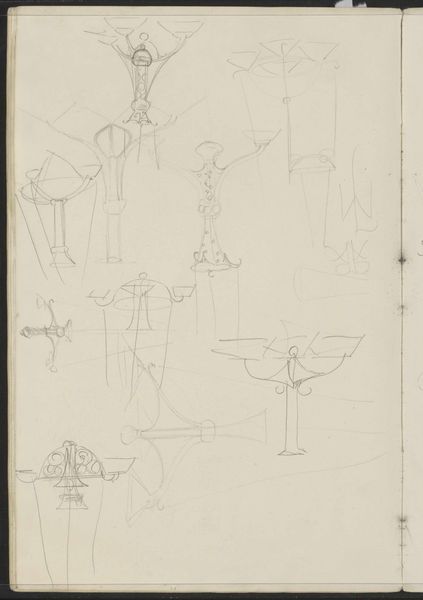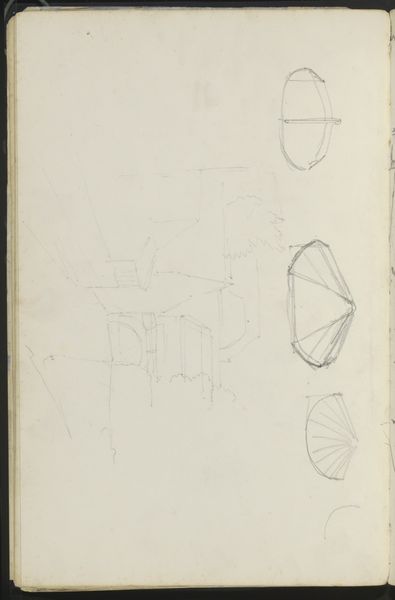
drawing, pencil
#
drawing
#
comic strip sketch
#
quirky sketch
#
arts-&-crafts-movement
#
personal sketchbook
#
idea generation sketch
#
sketchwork
#
ink drawing experimentation
#
pen-ink sketch
#
pencil
#
sketchbook drawing
#
storyboard and sketchbook work
#
sketchbook art
Copyright: Rijks Museum: Open Domain
Editor: This is "Ontwerpen voor lampen," or Designs for Lamps, a drawing in pencil and ink by Carel Adolph Lion Cachet, dating from around 1903-1904. It’s currently held at the Rijksmuseum. It strikes me as very process-oriented, almost like peeking into the artist's mind as he works through different ideas. What do you see in this piece? Curator: Absolutely. This isn’t a finished product, but a glimpse into the labour of design itself. Note the Arts and Crafts influence; we see an emphasis on handcrafting, a reaction against industrial production methods, where design and construction are closely interlinked. What do you think the material realities are influencing the designs of the lamps? Editor: Well, looking at the shapes and ornamentation, I'd guess that metalworking, perhaps brass or wrought iron, might be a key consideration. It’s not about sleek, mass-produced forms. It's also apparent how he wants light to interact with them. Curator: Precisely. Consider too, the social context: who would have commissioned and used these lamps? What would the lamps have been made of? These objects would have signaled a certain status and aesthetic preference. Editor: That's interesting, I hadn't thought about it like that, viewing the sketches as clues to social standing. It really changes my understanding of what a "simple" sketch can convey! Curator: Right, and by examining these designs, we can begin to understand the specific values attached to craft and materiality during this period. It goes beyond just function. Editor: So it’s about looking beyond the surface appearance and focusing on the ‘how’ and ‘why’ behind the creation. Thanks, I’ll keep that in mind. Curator: My pleasure. Remembering the social and material lives of objects helps ground the whole story of art.
Comments
No comments
Be the first to comment and join the conversation on the ultimate creative platform.



